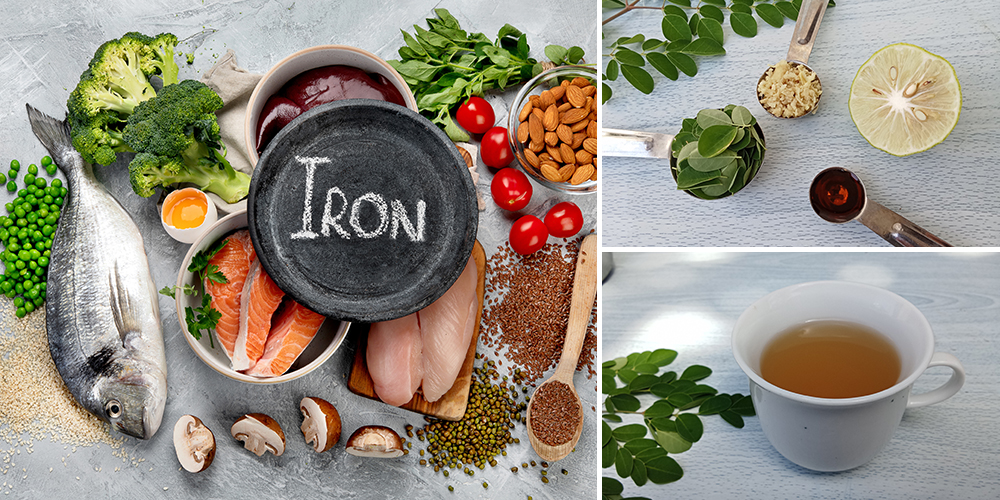
Don’t Take Iron Unless…
Iron is one of the most important elements for physical and mental well-being. It plays a vital role in supporting the immune function. As people age, certain health conditions and lifestyles may cause a shortage of iron, worsening all the existing health issues.
A surplus of iron in the body is also detrimental to one’s health. Excessive iron in the blood may damage the vital organs leading to liver problems, diabetes, arthritis and heart failure.
That is why you should not take iron supplements unless you have a severe deficiency to prevent it from creating more serious problems. Only a doctor can diagnose iron deficiency through a blood ferritin test.
Function of Iron in the Body
About 70% of the body’s iron is in hemoglobin and myoglobin. Hemoglobin is the red blood cells that transfer oxygen from the lungs. Myoglobin is the muscle cell that accepts, stores, transports and releases these oxygens.
Iron is an essential element that aids in the following:
 Hemoglobin production and oxygen transport
Hemoglobin production and oxygen transport- Muscle contraction
- Maintaining immune function
- Fighting viruses and bacteria
- Enhancing the nerve function
- Improving sleep quality
- Boosting the energy level
- Enhancing hair and skin health
What Causes Iron Deficiency?
Poor diet, chronic blood loss, vigorous exercise and health conditions that decrease the body’s iron absorption can result in iron depletion. It is also common among pregnant and breastfeeding women.
In older people, iron deficiency is quite different. Anemia is more prevalent in people older than 65 and its causes are vague and not always easily identified. Some may be the effects of chronic diseases and inflammation which are also common with age.
The exhaustion of red blood cells causes iron to run out of balance. In seniors, the most common causes of iron deficiency are:
- Poor iron absorption
 Low stomach acid
Low stomach acid- Inflammatory bowel diseases
- Thyroid conditions
- Liver diseases
- Ulcer
- Cancer treatment
- Chronic gastrointestinal diseases
- Decline in physical activities
- Alcohol abuse
- Drug interference
Signs of Iron Deficiency
Mild iron depletion may go unnoticed as it does not always display symptoms. Sometimes, a person may only feel a little weak and a little run down.
In severe deficiency, you may see yourself as too pale, having cold hands and feet, palpitation, weakness and lethargy, shortness of breath, chest pains, or headaches.
What Happens if You Take Too Much Iron?
Iron is abundant in foods and will likely supply the body enough of its needed amount. Older people are not prone to accumulating excess iron from a healthy and balanced diet and moderate supplementation.
However, this age group may risk the buildup of toxic levels of iron by excessive smoking and drinking. Hormone therapy, repetitive blood transfusion and B12 deficiencies also contribute to iron buildup.
Too much iron in the blood can cause oxidative stress and may damage vital organs. Excessive iron that is acquired more than the cells need typically gets stored in the organs. It risks damage to the heart, liver and pancreas and may lead to cancer.
⇒ The Only 4 Antibiotics People Should Stockpile (Video)
Hemochromatosis, or iron overload in the blood, is also a precursor to secondary diabetes.
Iron-rich Foods and Herbs
Luckily, you can get iron from most food without supplementation unless you have severe iron deficiency.
There are two types of iron you can get from food: heme and non-heme.
Heme iron is found in meat, fish and poultry. It is well absorbed in the body and at a higher rate but may also assimilate in the blood and cause overload.
Non-heme iron comes from dark leafy green vegetables and fortified foods like pasta and bread. Non-heme iron is more suitable for older people because it is much easier for the body to regulate.
Moringa
Moringa (Moringa oleifera), or drumstick tree, is one of the most effective herbs in treating and preventing iron deficiency anemia. Moringa does not only supplement the body with iron but also acts as a chelating agent to remove excess and prevent its buildup.
Dandelion
Dandelion (Taraxacum officinale) has been used as a remedy for anemia, purifying the blood and enhancing the immune response. Clinical trials evaluated its effect on RBC and showed a significant increase in hemoglobin and a decrease in the growth of cancer cells.
Gotu Kola
Indian pennywort, or gotu kola (Centella asiatica), is a rich source of minerals like iron, magnesium, potassium and calcium. This leafy green also contains flavonoids and carotenoids that help improve iron absorption.
Alfalfa
Alfalfa (Medicago sativa) is a highly effective cure for anemia that contains phytochemicals that increase iron absorption. Alfalfa sprouts can be taken as a tea or salad for improving iron deficiency, lowering the blood pressure level and managing diabetes.
Beetroot
The juice of beetroot (Beta vulgaris) is rich in iron which helps in the regeneration of red blood cells. Beetroot iron content is easily absorbable in the bloodstream, making it a natural therapy for low blood hemoglobin and anemia.
Nettle
Stinging nettle (Urtica dioica) is a good herbal remedy for combatting internal bleeding. It alleviates nosebleeds, uterine bleeding and bowel bleeding. An infusion of stinging nettle leaves contains iron and Vitamin C that increase its absorbability and act as blood and general body tonic.
Spirulina
Spirulina is considered the best remedy that may ameliorate anemia and immunosenescence in older people, according to a study. Spirulina (Arthrospira platensis) is a cyanobacterium used as a food supplement that is rich in non-heme iron which has higher absorbability. About 2 to 3 grams of spirulina powder taken once a day may fulfill the iron requirement in senior citizens.
Parsley
Parsley (Petroselinum crispum) is a leafy green herb widely used in the Mediterranean for treating anemia. Parsley juice contains a high concentration of iron and Vitamin C that promotes iron absorption.
Lemon
Lemon does not contain a significant amount of iron, but it is high in Vitamin C. Vitamin C is essential in improving the absorbability of iron. Better absorption helps the body to maintain its balance by ensuring that it takes in iron as needed.
⇒ The Leaky Gut Herbal Blend Recipe (Video)
Yellow Dock
Yellow Dock (Rumex crispus) is a powerful blood cleanser and tonic. It is a natural source of chelated iron. Yellow dock is used for boosting iron in pregnancy and older populations, and in treating iron deficiency anemia.
Moringa-Ginger-Lemon Tea
This recipe uses the iron-rich Moringa leaves to supply the body with essential iron and more. Moringa contains vital compounds and polyphenols that can treat various health maladies.
Moringa reduces inflammation and ulcerative colitis, which may contribute to iron loss and internal bleeding. It is also an excellent herbal remedy for reducing and preventing many types of cancer.
While moringa is generally safe, it should not be taken for a long period without consulting a doctor. Avoid using it as an herbal food supplement if you are taking other medications without a doctor’s approval.
Ginger and citrus fruits are a good pair with non-heme foods to assimilate their absorbability and protect against excess free iron.
 Ingredients
Ingredients
- 1 tsp grated ginger
- 1 tbsp fresh moringa leaves
- 2 cups water
- ½ lime (or lemon)
- Honey, optional
Steps
- Place the grated ginger in water and bring to a boil. Add the fresh moringa leaves, reduce the heat to low and simmer for about 5 minutes.

- Remove from heat and strain into cups.

- Add lime juice and sweeten with honey.

Note: Alternatively, you can use moringa powder by dissolving 1 tsp in a cup of hot but not boiling water.
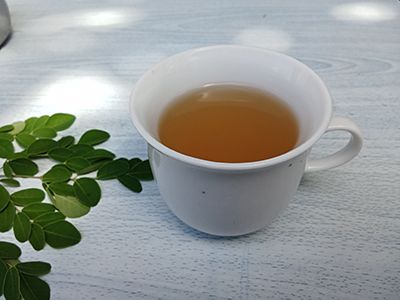 To use: Serve the moringa-ginger-lime tea warm, or let it cool down and add ice for an ice-cold version. Take 1 to 2 cups of moringa tea daily to support the hemoglobin production.
To use: Serve the moringa-ginger-lime tea warm, or let it cool down and add ice for an ice-cold version. Take 1 to 2 cups of moringa tea daily to support the hemoglobin production.
Moringa tea can be taken any time of the day. However, it may be best served at night to encourage a restful sleep as it decreases the cortisol level.






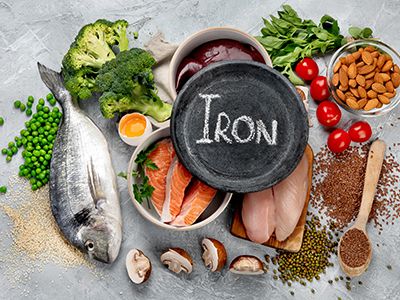 Hemoglobin production and oxygen transport
Hemoglobin production and oxygen transport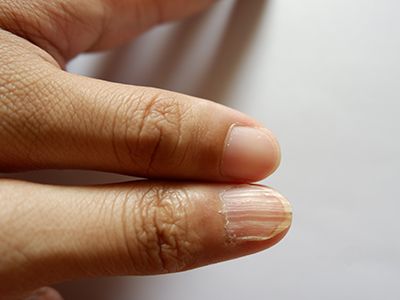 Low stomach acid
Low stomach acid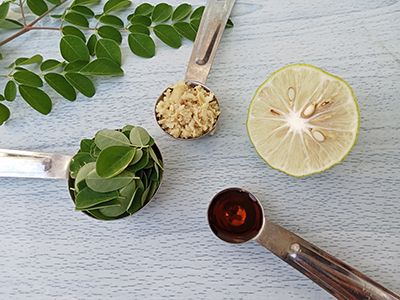 Ingredients
Ingredients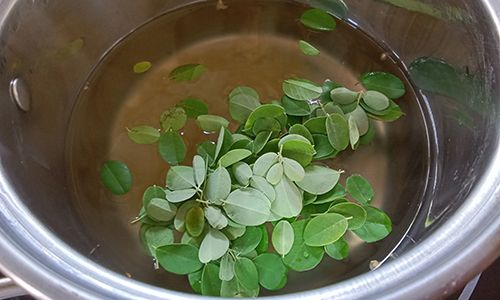
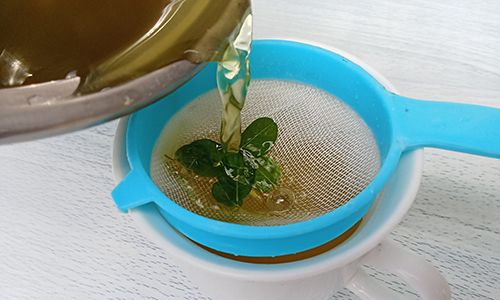
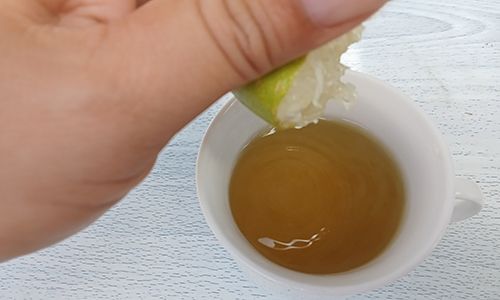

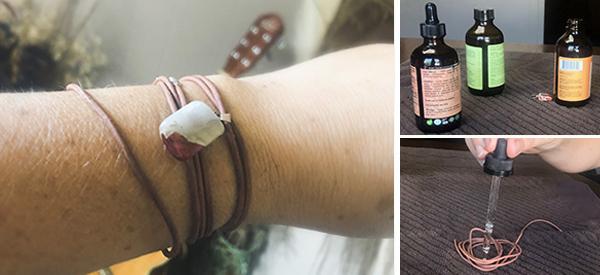
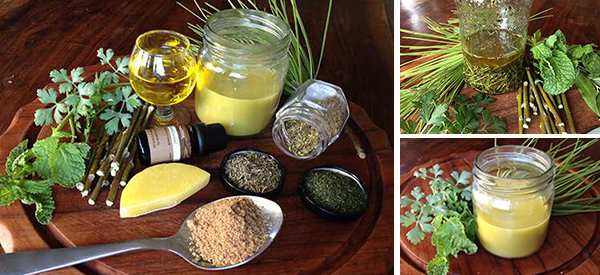
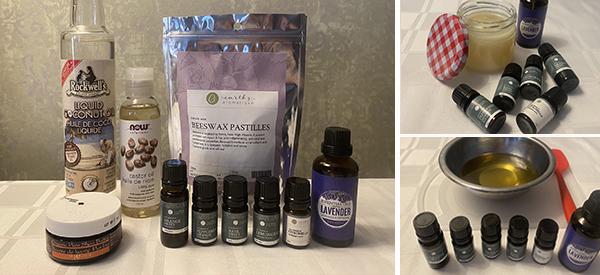
Is the picture of the disfigured fingernail related to iron in some way, or is the picture included as a “bait shot”, for its fear factor? You fail to mention why it is there. I suffered from that disfigurement for some time. I never learned what caused it, and the information I could find was so broad as to be useless. My condition is gone, now, and I didn’t address iron to restore my fingernails at all. What I focused on, and continue to focus on, is the elimination of sugar from my diet. I believe that sugar in all its forms is perhaps the greatest threat to health in America, and around the world, that we face today.
I think sugar is responsible for a lot of bad health unless using natural sugars like honey and then in small amounts due to its high calories etc.
Is it true that one can derive iron from the use of cast iron cookware?
I’ve always heard that and I use cast iron a lot but am anemic.
Well I heard it too and use cast iron for everything from sauté to front, baking, wok, etc. I have no symptoms of excessive iron, but my Dr. will not order the ferrite test to confirm.
Blackstrap molasses and sorghum have high amounts of iron.
Thank you Nichole. I really find the subscription notifications very helpful to keep check of my nutritional intake. You are magic.
I have received my book, which I’m very pleased with, but I didn’t get the two bonuses
disaster medicine and growing herbs in a small area of the garden please could you send them to me? They may have got lost.
I have a severe iron deficiency and naturopath recommend infusion therapy. I take90-100 mcg a day which is 3 x usual…I tend to take spirulina every 3 days with vitamin c,d,and B12 for absorption. I also take shilijit and sea moss. It’s helped significantly. Pretty confident as I am getting stronger. Hospital tried to say I had SCAD which is heart disease,which I knew was ludicrous as my grandmother is 108 living solo,no ailments as well as rest of family. We Detox every month toxins,drink water that is purified to 98 percent and have air filters,ground and meditation hypnosis. Thank you for this article. I have moringa and yellow dock non GMO in my cupboard as we speak,I’ll add small doses slowly. Thank you 🙏
I’ve been taking iron as I displayed multiple symptoms of iron deficiency that I found on a medical website. I do have borderline low platelets so thought it may help with that as well. 3 of my fingernails look similar to the pictures but I do have psoriatic arthritis. I’ve been able to go off of my methotrexate using medicinal mushroom powder in my coffee and the teas from antiinflammatory herbs that I learned from you.
I have hemochromatosis/iron overload. I was so high it stored in my liver causing cirrhosis and also arthritis in my joints neck, back, hips, top of feet wrists and knuckles. I wasn’t diagnosed until I was 60 but it is genetic so had since birth. I’m in maintenance now, I took various supplements drank milk with every meal as this helps to lower iron absorption and don’t drink alcohol or Vit C as this aids iron absorption. I also had venesection taking 1 pint of blood every week for a year. With hemochromatosis we don’t have the genetics or dna to get rid of excess iron as normal people do. Cast iron does increase iron when cooking as does red meats, offal etc. veggies is nonheme so less iron . Eggs are also good. Interesting enough alot of foods including most breakfast cereals are fortified with iron as is flour! and breads from supermarkets. You have to read everything and don’t eat or drink but c /orange fruits with dinner so if your sneamic drink orange juice with every meal as this helps absorb iron in or from the foods
I was diagnosed with very high iron I’m very healthy eater eating herbs and kale in leafy greens and now I have to try to cut something out I also use cast iron pans so I’m really don’t know what to eat anymore I thought I was doing the right thing by eating healthy, any suggestions